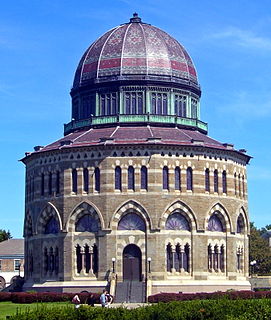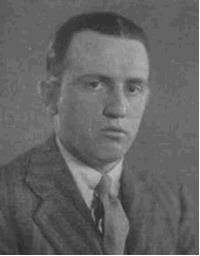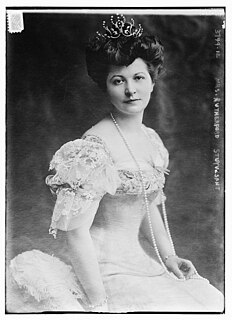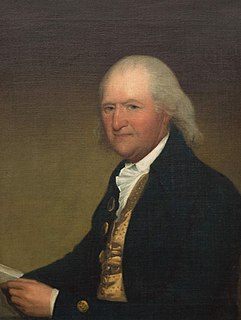
Peter Stuyvesant was a Dutch colonial officer who served as the last Dutch director-general of the colony of New Netherland from 1647 until it was ceded provisionally to the English in 1664, after which it was split into New York and New Jersey with lesser territory becoming parts of other colonies, and later, states. He was a major figure in the early history of New York City and his name has been given to various landmarks and points of interest throughout the city.

New Netherland was a 17th-century colony of the Dutch Republic that was located on what is now the East Coast of the United States. The claimed territories extended from the Delmarva Peninsula to southwestern Cape Cod, while the more limited settled areas are now part of New York, New Jersey, Delaware, and Connecticut, with small outposts in Pennsylvania and Rhode Island.

Schenectady is a city in Schenectady County, New York, United States, of which it is the county seat. As of the 2010 census, the city's population of 66,135 made it the state's ninth-largest city by population. The name "Schenectady" is derived from the Mohawk word skahnéhtati, meaning "beyond the pines". Schenectady was founded on the south side of the Mohawk River by Dutch colonists in the 17th century, many of which were from the Albany area. The Dutch transferred the name "Skahnéhtati" which is in reality the Mohawk name for Albany, New York. These Dutch were prohibited from the fur trade by the Albany monopoly, which kept its control after the English takeover in 1664. Residents of the new village developed farms on strip plots along the river.

The Mohican are an Eastern Algonquian Native American tribe that historically spoke an Algonquian language. As part of the Eastern Algonquian family of tribes, they are related to the neighboring Lenape, who occupied territory to the south as far as the Atlantic coast. The Mohican occupied the upper tidal Hudson River Valley, including the confluence of the Mohawk River and into western New England centered on the upper Housatonic River watershed. After 1680, due to conflicts with the powerful Mohawk to the west during the Beaver Wars, many were driven southeastward across the present-day Massachusetts western border and the Taconic Mountains to Berkshire County around Stockbridge, Massachusetts.
Edward Rutherfurd is a pen name for Francis Edward Wintle. He is best known as a writer of epic historical novels that span long periods of history but are set in particular places. His debut novel, Sarum, set the pattern for his work with a ten-thousand-year storyline.
Jacobus van Cortlandt (1658–1739) was a wealthy Dutch American merchant, slave owner, and politician who served as the 30th and 33rd Mayor of New York City from 1710 to 1711 and again from 1719 to 1720.

The Van Cortlandt family was an influential political dynasty from the seventeenth-century Dutch origins of New York through its period as an English colony, then after it became a state, and into the nineteenth century. It rose to great prominence with the award of a Royal Charter to Van Cortlandt Manor, an 86,000-acre (35,000 ha) tract in today’s Westchester County sprawling from the Hudson River to the Connecticut state line granted as a Patent to Stephanus Van Cortlandt in 1697 by King William III.
New Netherlanders were residents of New Netherland, the seventeenth-century colonial province of the Republic of the Seven United Netherlands on the northeastern coast of North America, centered on the Hudson River and New York Bay, and in the Delaware Valley.

Anthony Janszoon van Salee (1607–1676) was an original settler of and prominent landholder, merchant, and creditor in New Netherland. Van Salee is believed to be the son of Jan Janszoon, a Dutch pirate who after 1619 served a Moorish state on the Barbary Coast. His mother Margarita was Moorish and Van Salee was a Muslim; he may have been the first of this background to settle in the New World.
Johannes Pieterse van Brugh (1624–1697) was one of the early settlers of New Netherland and is the progenitor of the Van Brugh family in the United States. He was prominently connected with the Dutch West India Company as a fur and timber trader in both Rensselaerswyck and New Amsterdam.
Johannes Megapolensis (1603–1670) was a dominie (pastor) of the Dutch Reformed Church in the Dutch colony of New Netherland, beginning in 1642. Serving for several years at Fort Orange on the upper Hudson River, he is credited with being the first Protestant missionary to the Indians in North America. He later served as a minister in Manhattan, staying through the takeover by the English in 1664.

Lawrence Gwyn Van Loon was an American general practitioner, amateur historical linguist and forger.

The Stuyvesant family is a family of American politicians and landowners in New York City. The family is of Dutch origin and is descended from Peter Stuyvesant (1610–1672), who was born in Peperga, Friesland, Netherlands and served as the last Dutch Director-General of New Netherland.

Peter Gerard Stuyvesant was an American landowner, philanthropist and descendant of Peter Stuyvesant who was prominent in New York society in the 1600s.
David Pieterse Schuyler was a Dutch-born member of the Schuyler family. He was a fur trader, Alderman of Albany, captain, and merchant.
Catharina Verplanck, also known as Callyntje Verplanck, Catalina Verplanck, or Catharina Schuyler was the daughter of Verplanck family progenitor and land developer Abraham Isaacsen Verplanck and wife of David Pieterse Schuyler who was a progenitor of the Schuyler family.

Mathilde, Princess Alexandre de Caraman Chimay was a French heiress and society leader who is known for her three marriages to wealthy and prominent men, a Dutch Count, an American heir, and a Belgian Prince.
Maria van Cortlandt van Rensselaer, also known as Maria van Rensselaer was the Dutch administrator and treasurer of the Manor of Rensselaerswyck, now Albany, New York.

Petrus "Peter" Stuyvesant was a New York landowner and merchant who was a great-grandson of his namesake, Peter Stuyvesant, the last Dutch Director-General of New Amsterdam.
Lt.-Col. Hubertus "Gilbert" Livingston was a younger son of Robert Livingston the Elder who was a lawyer and politician in colonial New York.











